The Fundamentals of Making Guacamole
Guacamole is my go-to easy dish to bring to events. As a side dish at barbecues. With drinks with friends. Every day of the week with Mexican food. Although we are in the midst of the coronavirus pandemic and not actually doing most of that these days! We do still have to eat. And what better time to eat well than when we're all stuck inside, trying to make bread, anyway? This guacamole recipe is a trade secret. People are always asking where I bought it and are amazed at how simple it is to make at home!
Also don't worry! Esméralda, making her usual cameo, doesn't eat the food. She just watches it wondering why it gets more attention than her at that moment! Cats generally shouldn't eat avocados. Their pit, skin, bark, and leaves generally contain toxic amounts of persin. Theoretically there isn't enough of this in the flesh to be harmful and they can eat it without a trip to the veterinary ER! But most don't risk it. I don't risk it. Ezy doesn't eat the food!
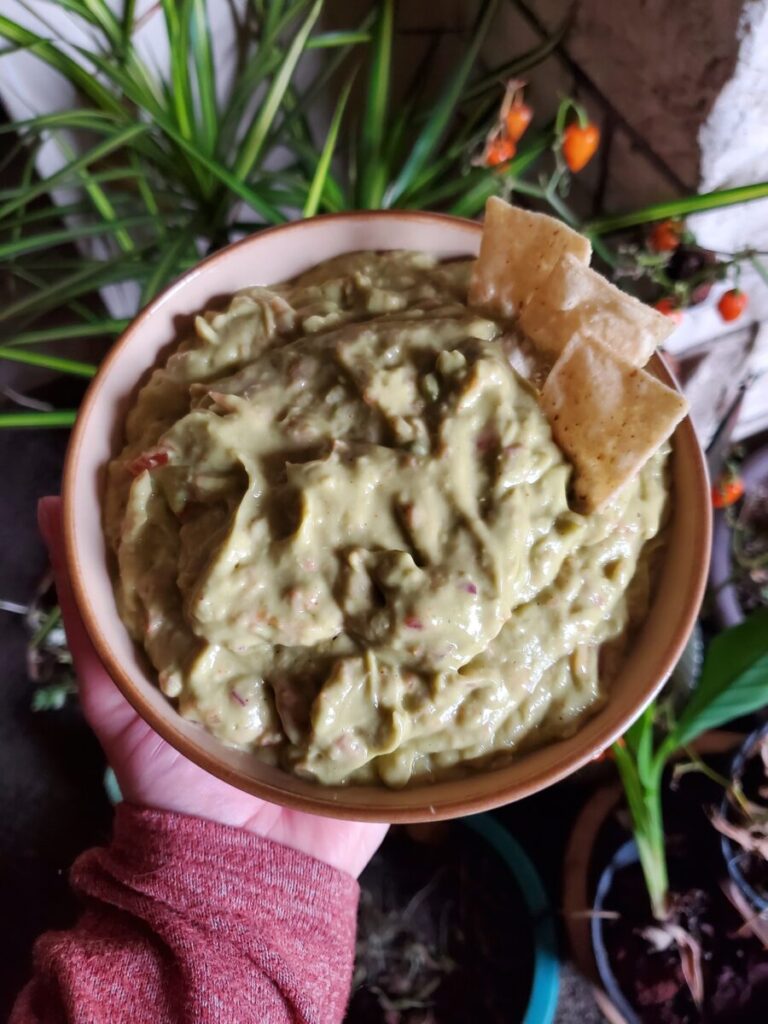
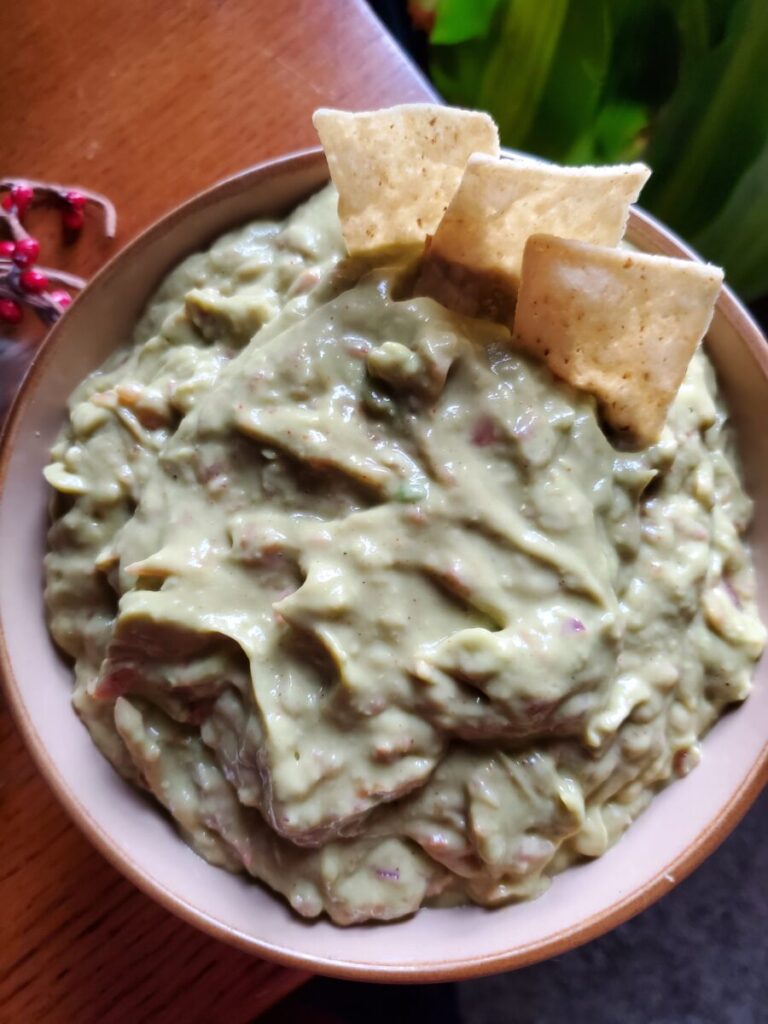
Adding Adequate Amounts of Citrus
The key to guacamole is adding the same number of limes as avocados, getting ripe avocados, and puréeing the Dickens out of them!
One of the principal issues with this guacamole recipe is that there isn't enough citrus. You need enough lime to offset the creaminess of the avocados.
This means that I don't measure the limes. It's more about the ratio than the exact amount. One avocado to one lime. I usually do 3 avocados and 3 limes, but feel free to scale up or scale down the recipe to accommodate your needs.
If you have particularly small limes compared to the avocados or there isn't enough citrus, feel free to add some more! This is one of those recipes where there almost is never too much lime. I've added up to 5 limes for 3 avocados.
If you don't have limes, lemons work in a pinch. I've even put vinegar in them, instead. It doesn't have the same taste. But, if you end up with ripe avocados and somehow managed not to have any limes? It does work!
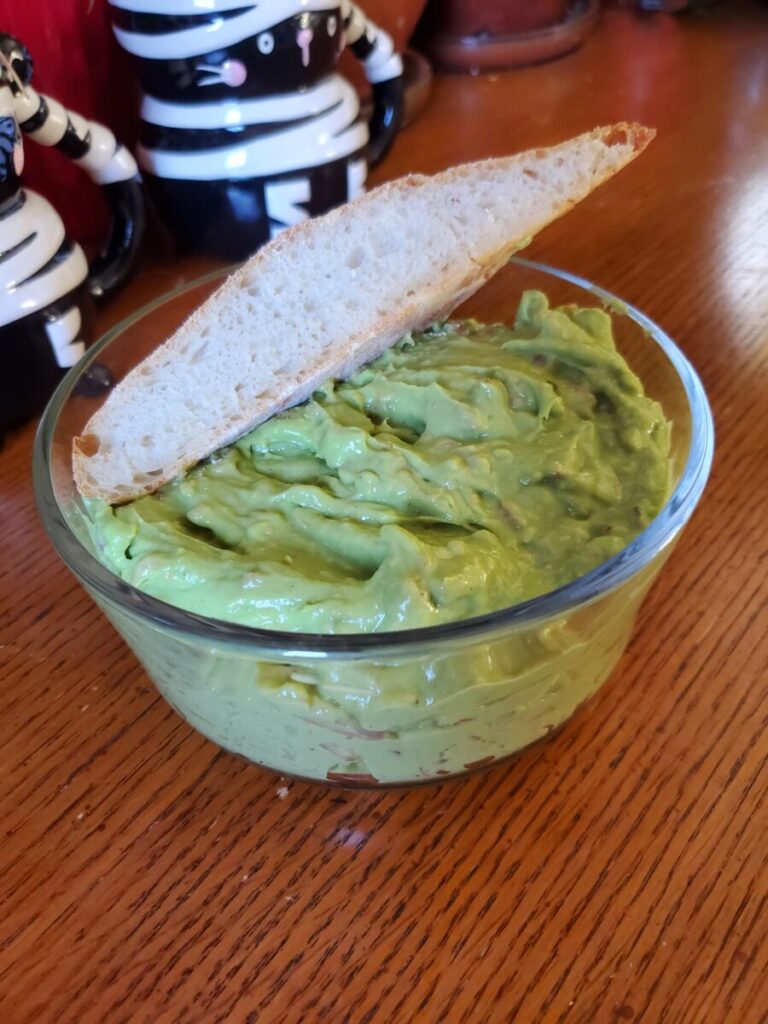
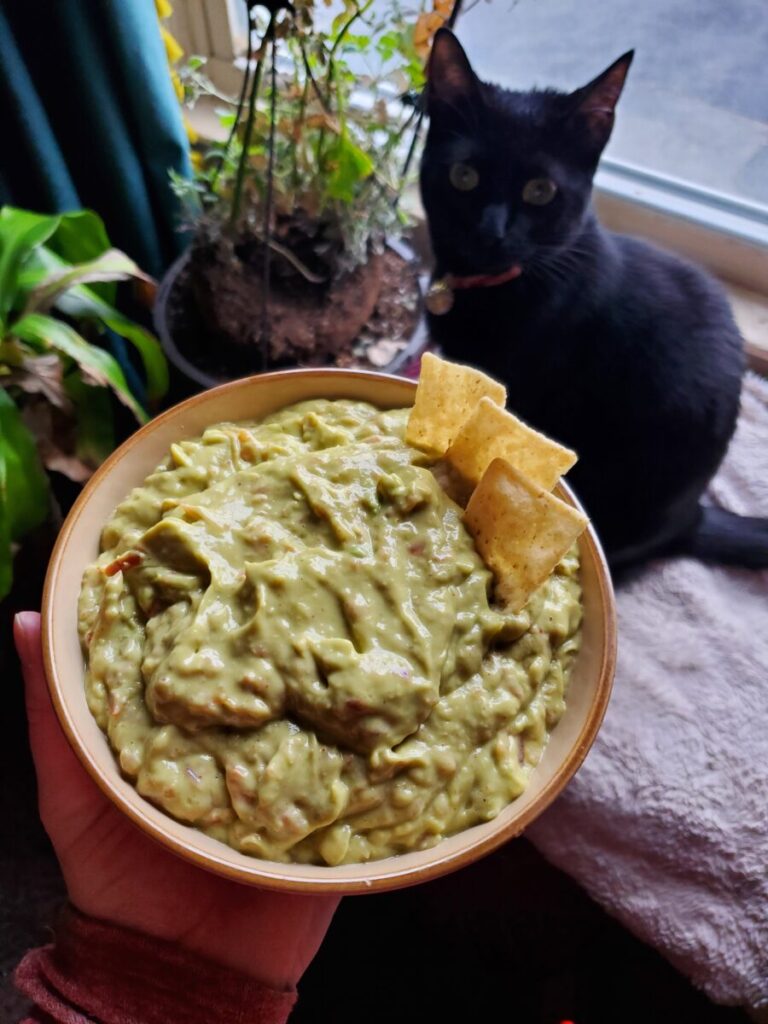
How to Pick a Ripe Avocado
Which leads to the second pitfall that is easy to fall into. Avocados have a perfect day that they're ripe on. Cut into them the day before and they're hard and inedible. Slice into them the day after and they're brown, stringy, and entirely unpleasant.
Avocados in the grocery store are usually underripe or way overripe. The skin is hard and wrinkled. Or they're way too soft and mushy. Neither of these are going to be anything that you want to eat!
When I'm shopping for avocados, I look for ones that are firm, but not hard. The hard ones will eventually ripen. Although it's harder to tell whether they're bruised or bumped. Like with apples, avocados will get soft spots if they're dropped or overripe. Since their skin is so tough, it can be difficult to tell with the harder avocados whether there are any of these spots.
The second thing that I'll look for is the same firmness all the way around. Avocados tend to ripen all at once. Any avocado that is softer on one side or in one area has likely been dropped or fallen off of the shelf at one point! Avoid these.
Lastly, I'll look for avocados that are a uniform color. They should be brown on the outside. Avocados do slightly change color with ripeness. The skin has a green tint while underripe and will be a darker color and more wrinkled when overripe. Particularly when the bruises start to set in and the flesh begins to cave in!
A good trick is also to peel the remnants of stem off. This will expose part of the flesh. If it's bright green, it's likely that the rest of the avocado will be, too! If it's brown and veiny, the inside will be as well! You're looking for green.
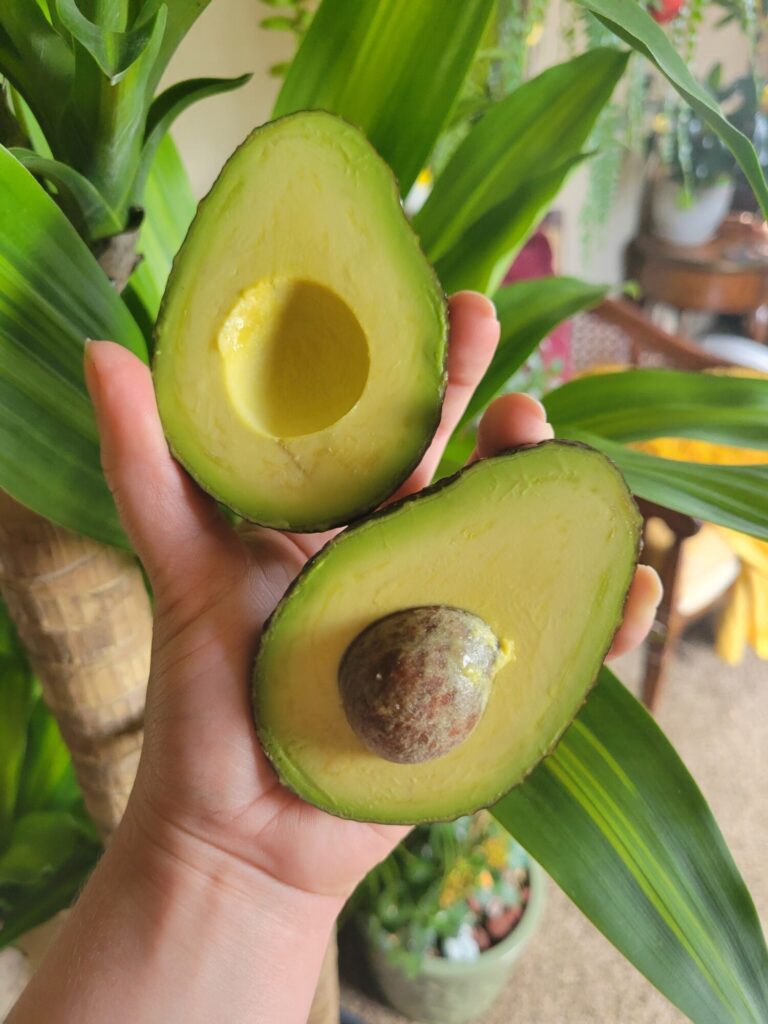
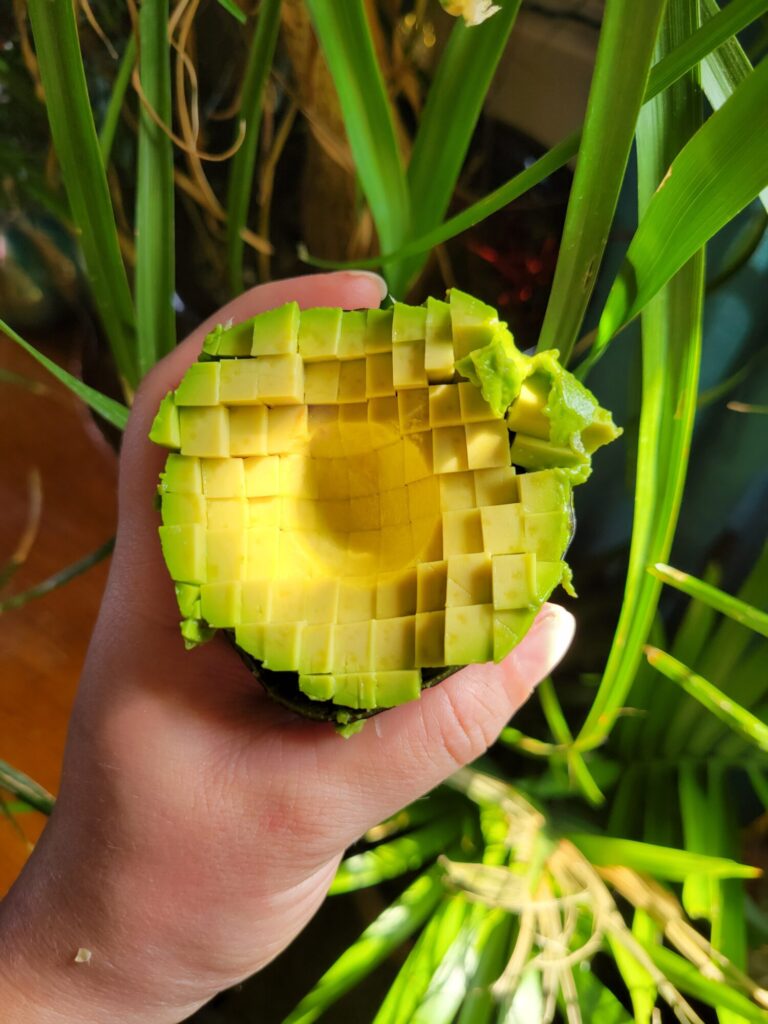
How to Ripen Avocados
Look for avocados that are firm, brown but not too dark, and as smooth and blemish free a skin as is possible with a wrinkly fruit. Even if you can find all of this, though, the avocado likely isn't ripe yet. Avocados take quite a while to ripen and are only good for a day when they are before they're overripe and unpleasant again.
This means that you're almost never going to luck out and find ripe avocados in the grocery store! You don't want the overripe ones, so your best bet is getting the underripe ones and waiting until they reach perfect eating stage.
If you leave one of these slightly underripe avocados on the counter, they usually ripen in a couple of days. Just keep checking back until they're no longer hard, but just a little bit softer and slightly firm still. I'm trying to figure out what to compare this to and the closest thing that I can think of is a stress ball! The avocado should keep its shape when you grip it slightly, but would give if you actually squeezed it.
If you don't have that that much time, wrap the avocados in a paper bag and they'll usually ripen in a day or two. This same method works for bananas and other fruit. They give off ethylene gas as they ripen. The paper bag traps the gas inside, without suffocating it, and causes the fruit to ripen faster.
If your avocados are ripening too quickly, put them in the refrigerator. This won't stop the ripening process, but it will forestall it for a few extra days.
Since avocados are so finicky in when they're ripe and how long they're good for, I tend only to buy them when I know what I'm going to do with them! Which is usually to make guacamole. Particularly because the citrus will prolong the shelf life of avocados immensely. They'll only last a day when perfectly ripe. So, if you want to eat them as is, you'll have to eat all of your avocados at once!
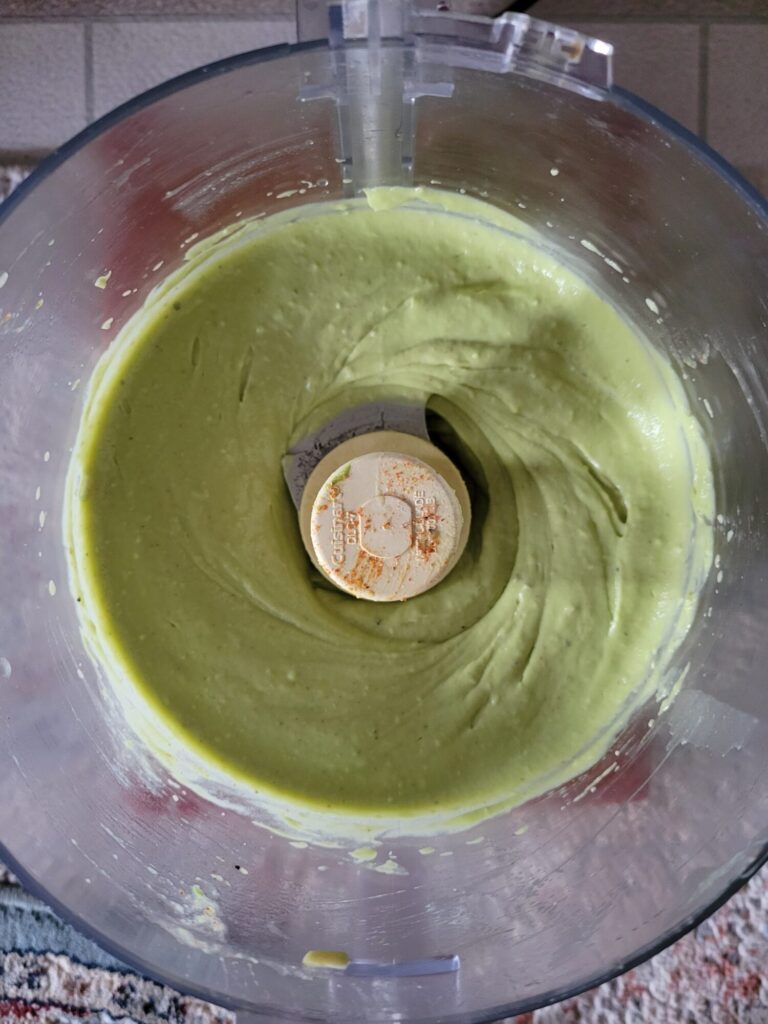
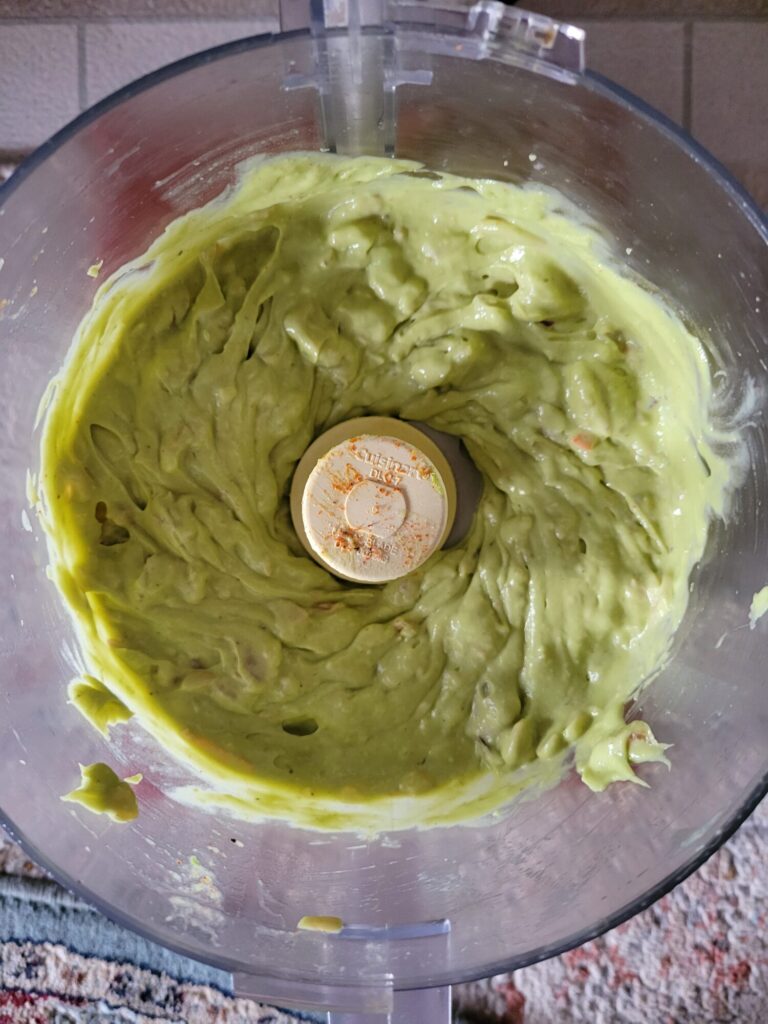
Purée Guacamole Completely
Some people like chunky guacamole. It's a staple at some restaurants, particularly the ones that make it table side. This makes making guacamole look simple. After all, they just pop open an avocado, mix it together with tomatoes and cilantro, squeeze a lime over it, and voila! Perfectly chunky guacamole!
What you don't see is all of the behind the scene work involved here. I've never worked at a restaurant that did table side guacamole. Mostly because I typically cook for Italian restaurants. But I have worked places that put avocado slices on sandwiches and such.
From one restaurant cook to every home cook out there, here are the dirty little secrets!
Restaurants will purchase cases of avocados at a time and keep them in the refrigerator. If not enough of them are close to being ripe, they'll wrap them in a paper bag and leave them out to ripen. If they're overripe, they'll carefully cut around the bruised and blemished portions and usually serve, anyway. Hoping that no one notices! If they're really overripe, hoards and hoards of avocados get tossed.
This is one of the dirty little secrets about restaurants and the agricultural business in general. A LOT of food gets thrown out. Not composted or donated or fed to animals (except avocados, which usually aren't edible for most pets or livestock). Literally tossed in the garbage can. Think that it's amazing that your avocados are always perfect in some restaurants? It's because 3 other avocados got tossed to find that perfect one! It's not economic and not something that I recommend doing at home. But that is how it's done.
The biggest trick to using all of your avocados at home and not creating food waste is puréeing your avocados well. If they're not perfectly ripe and slightly under or slightly over, puréeing is much more forgiving than slicing!
It also eliminates any of those little stringy pieces that are endemic in haas avocados. If you're anything like me, food texture is a thing that I'm particular about. If something should be soft and smooth, I don't want little grassy bits of slightly overripe avocado in everything!
So step away from the fork or mortar and pestle! Skip the hassle and purée the guacamole!
You don't have to do this. If you want to find or wait for the perfectly ripe avocados, absolutely go for it! But puréed guacamole is more forgiving than chunkier guacamole and far easier to do at home. So break out the food processor.
I also only purée the avocados, limes, garlic, and spices. The tomatoes and red onion I'll leave chunky. This gives that classic chunkiness without the textural unpleasantness. It also makes a quick and easy homemade recipe look professional.
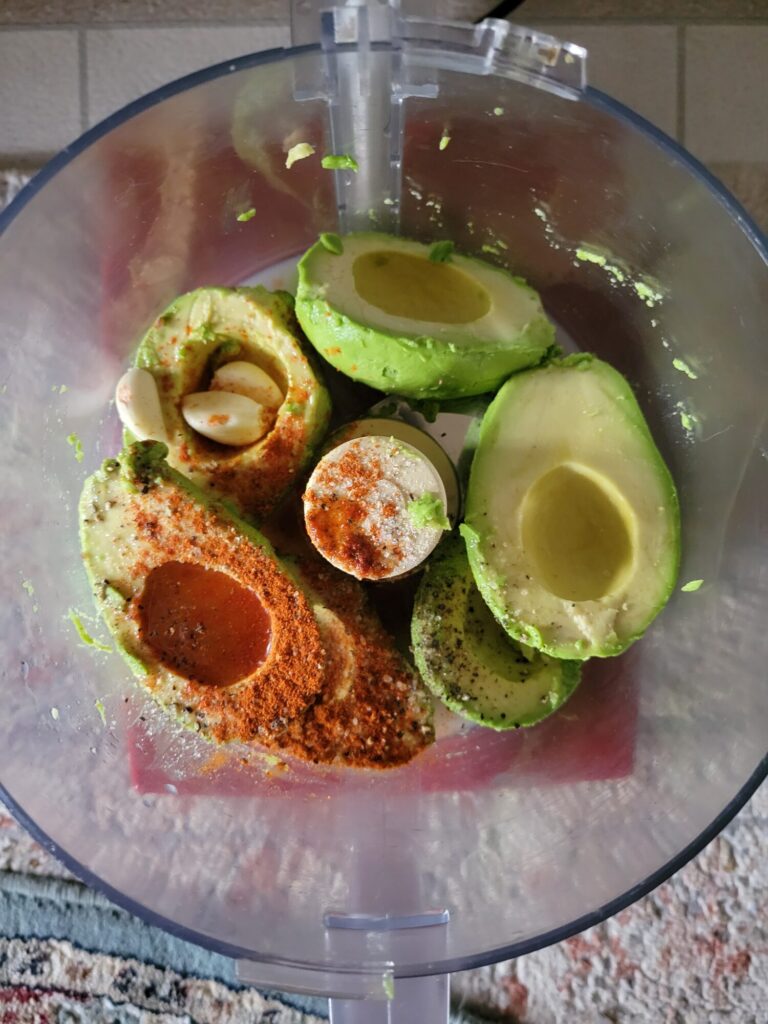
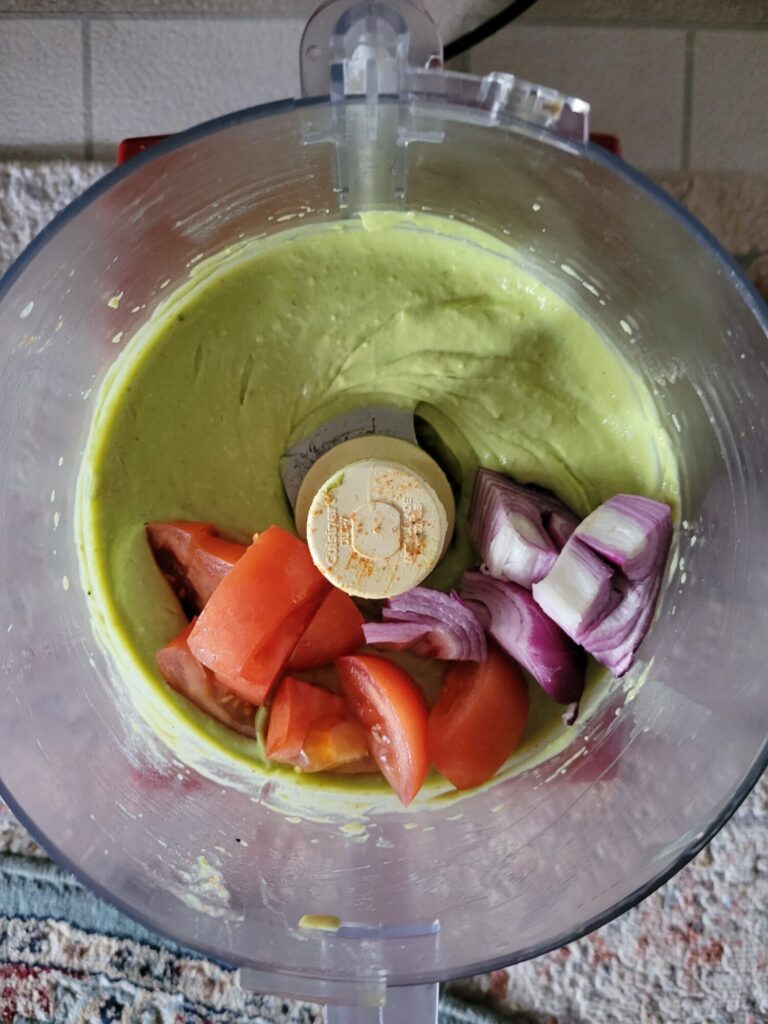
Add-Ins for Guacamole
I may have given quite the large spiel on how to pick the perfect avocados and ripen them properly. But don't fret! The actual recipe is rather easy. And, once you get the hang of choosing the right avocado, the actual guacamole recipe only takes 10 minutes. I usually add some extra time to chill. But you can absolutely make guacamole in a pinch and serve as is!
I am particularly fond of traditional guacamole. I've been making it in pretty much the exact same way for the better part of a decade. Why mess with perfection?
There are some additions that are worth it, though. A lot of recipes will call for a bit of cilantro. You'll never see me do this because I'm allergic to it. Even if you're not allergic, a lot of people have a genetic mutation that makes cilantro taste like soap. I don't have this issue, so I can't comment. But I do break out in hives and get a numb feeling in my mouth when I accidentally consume cilantro! So, while I wouldn't go near it with a 39 1/2 foot pole, a lot of people do actually like and can eat cilantro.
My go-to is hot peppers. I like to add 1-2 jalapeños or serranos. I'll halve these and add them to the food processor with the tomatoes and onion. I wouldn't ordinarily recommend adding so many peppers to this small of a dish. But the creaminess of the avocados balances really nicely with spice. So, I tend to indulge a little bit here!
A lot of recipes will already call for paprika sprinkled on top. I don't tend to always adorn my recipes just for show. But a little bit of paprika does tend to photograph well and is sure to impress friends and family!
Gallery



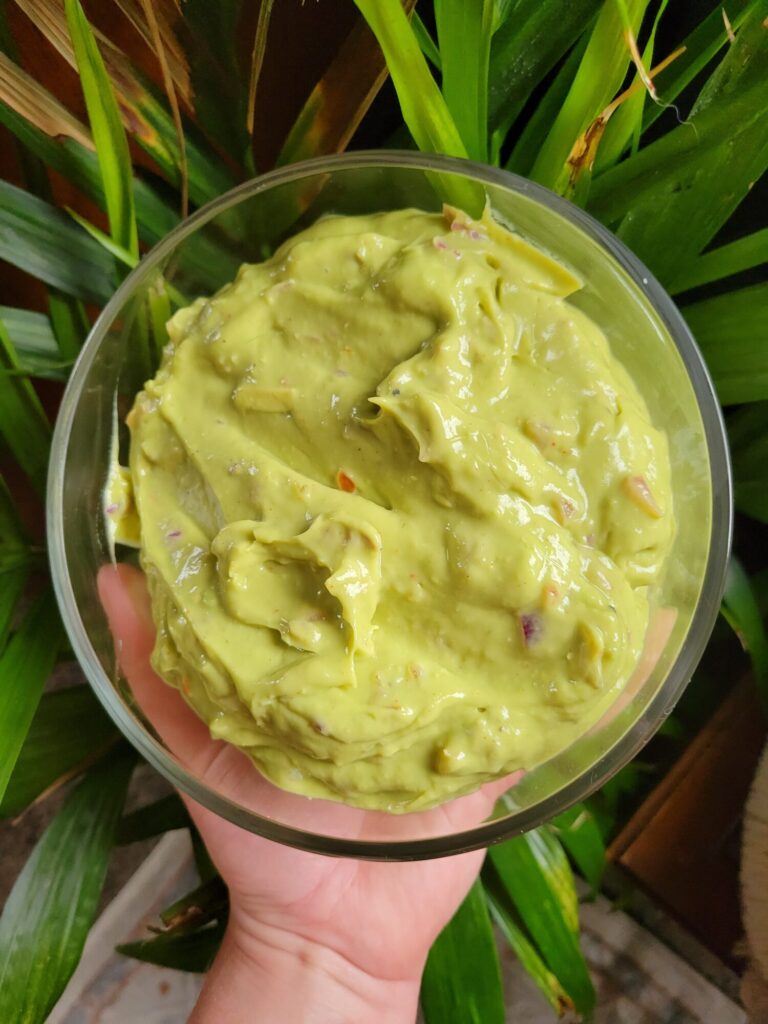
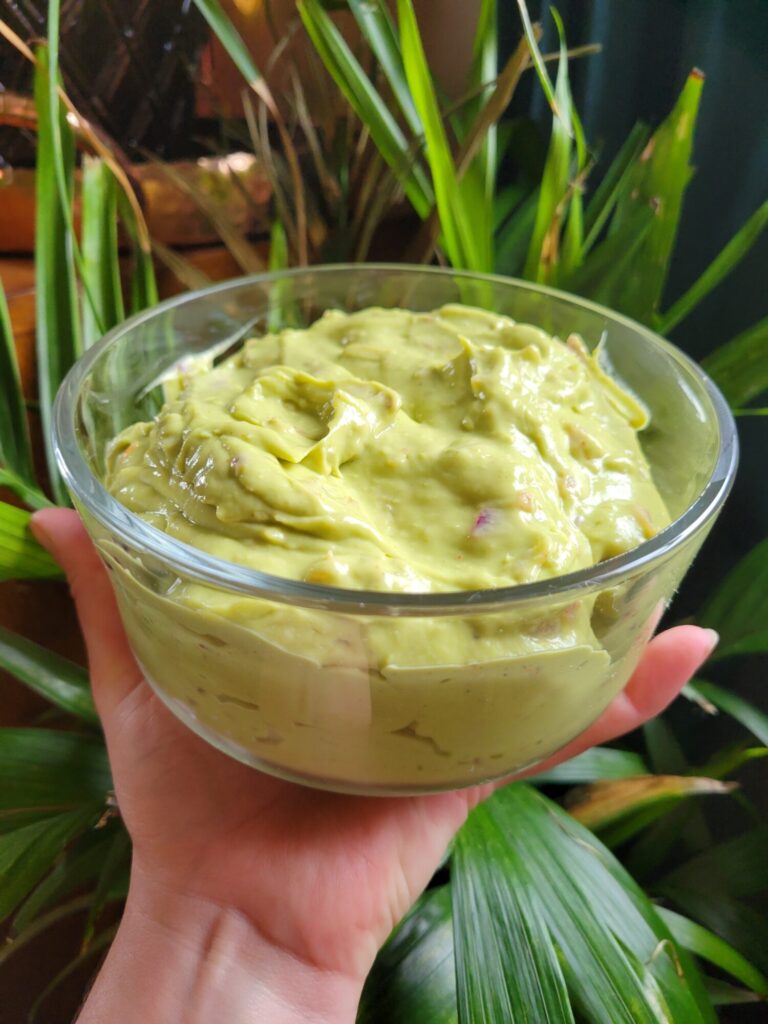
Variations of Guacamole
I adore making guacamole. It's one of my favorite summer foods. Not a single avocado season goes by without making guacamole! It's far simpler to make than most people realize and the taste homemade versus store-bought is absolutely no comparison. Guacamole is great for dipping chips or on top of a wide variety of foods, ranging from nachos and burritos to burgers and sandwiches. I'm also particularly fond of making similar recipes to guacamole with other avocado dips.
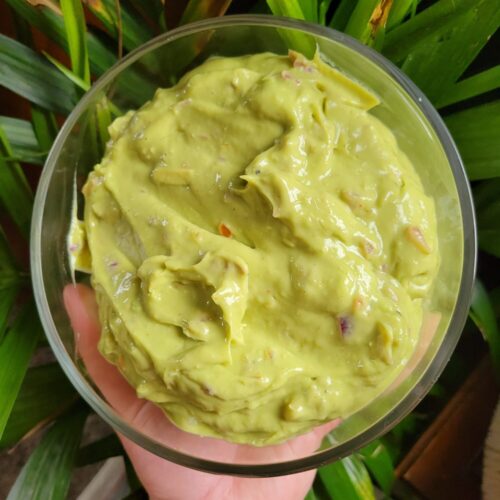
The Fundamentals of Making Guacamole
Equipment
- Food Processor
Ingredients
- 3 avocados ripe
- 3 limes juiced
- 3 cloves garlic (optional)
- dash salt
- dash pepper
- dash paprika
- 1½ large tomato quartered
- 1/4 red onion quartered
- 2 jalapeños or serranos (optional)
Instructions
- Add avocados, lime juice, garlic, salt, pepper, and paprika to a food processor. Process for 2 whole minutes, or until completely smooth.Make sure to scrape the sides occasionally and to get the avocados as puréed as possible. Taste at this stage as well and make sure that the avocados, lime, and spices are in the correct ratio. Once you add the tomatoes and onions, there's no going back! You can stir in more salt and pepper, but you can't purée again without starting a second batch!
- Add tomatoes, onion, and peppers (if using). Pulse 3-5 times, or until barely chopped.The goal is to keep some chunkiness to the guacamole. You're looking to roughly chop them without pulverizing them. So don't overdo it here!
- Serve chilled with a dash of paprika sprinkled on top.
Tips, Tricks, & Notes
- Guacamole is a great way to prolong the life of your avocados. There is so much citrus in it, that it keeps quite well in the refrigerator and is great to make ahead of time. There is this long held belief sometimes that guacamole will brown if you make it ahead of time. It will slightly on top, particularly if it's exposed to too much air. But I've never really found this to be the case with guacamole. Just stir it and no one will notice! If it really bothers you, just scrape the discolored part on the top off.
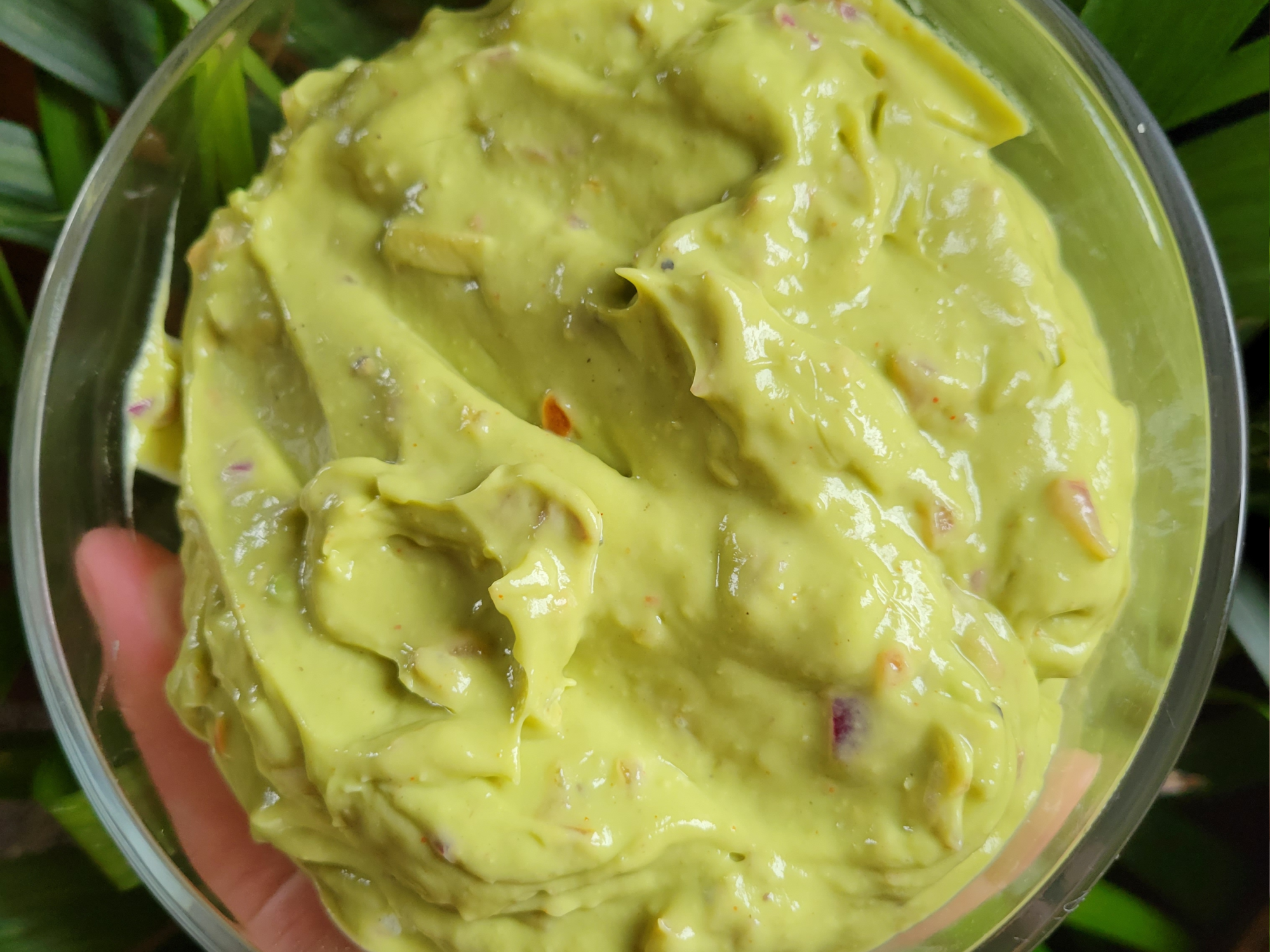
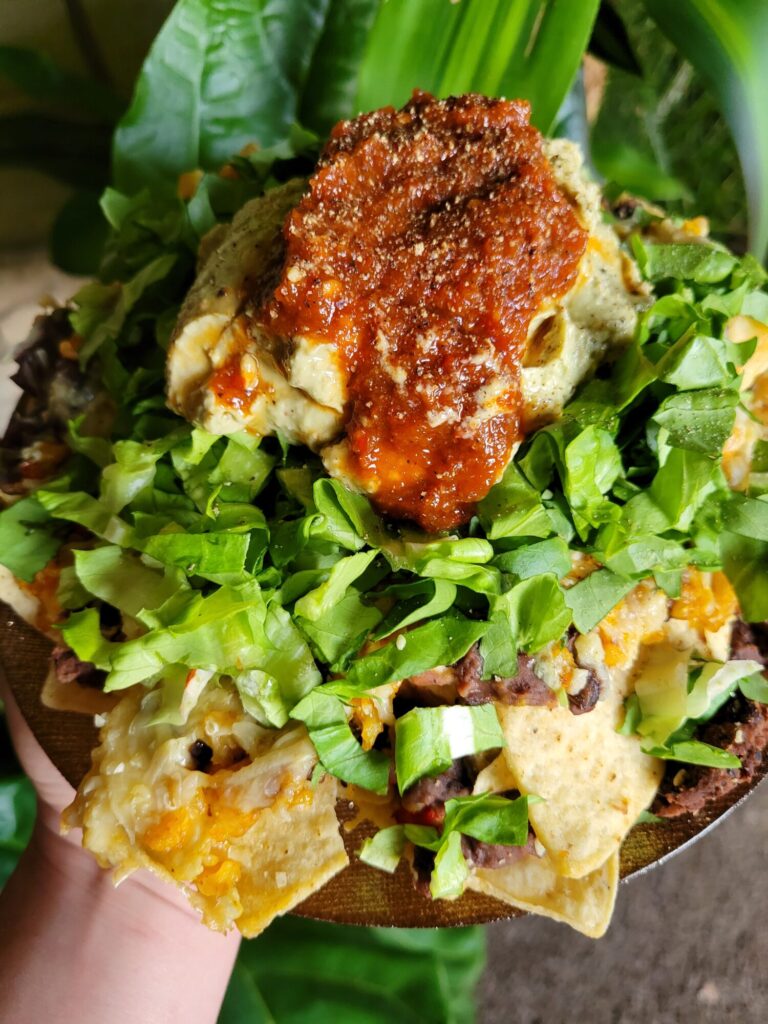
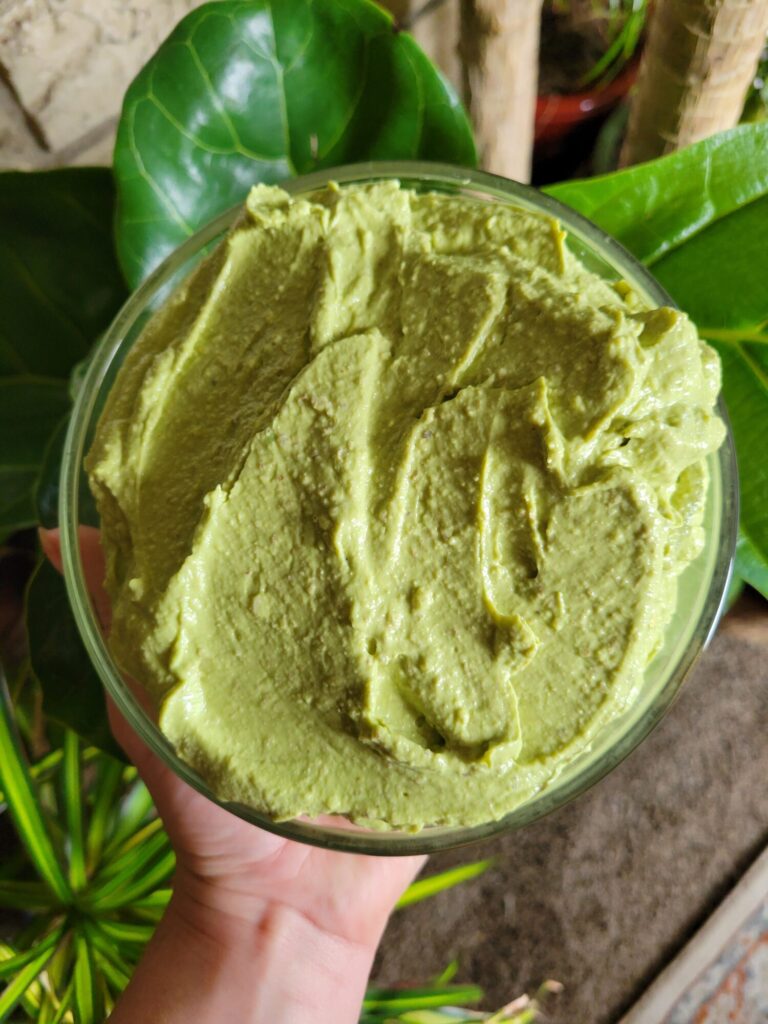
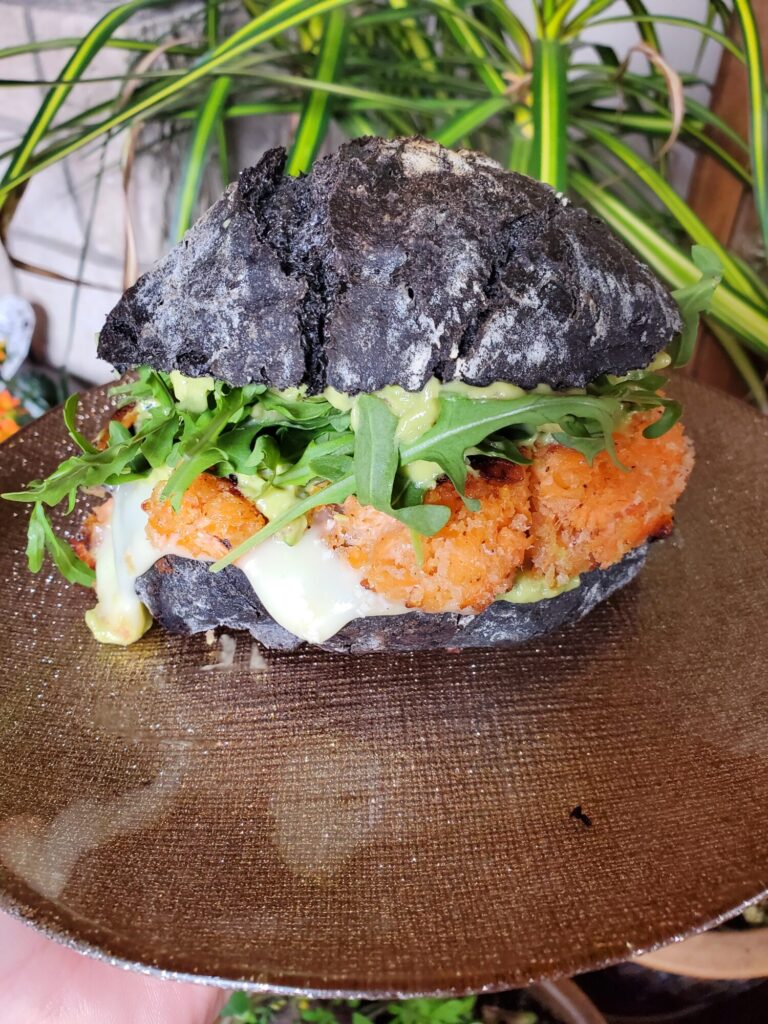
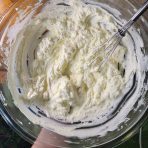


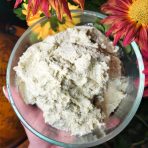
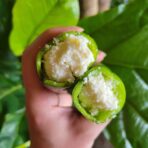



Leave a Reply